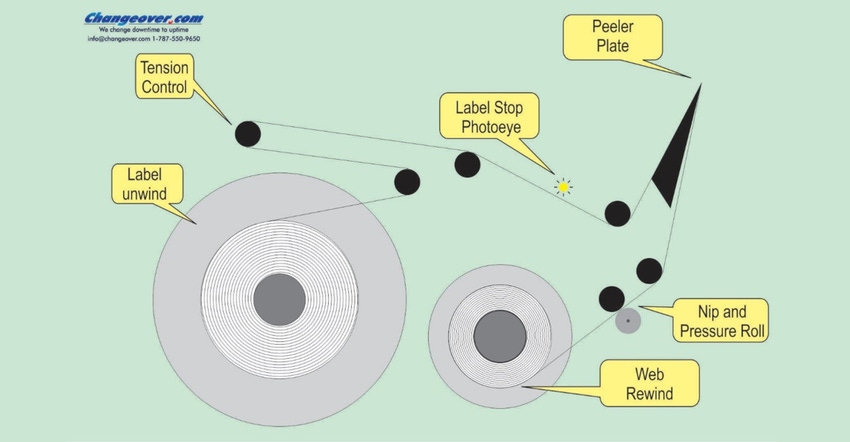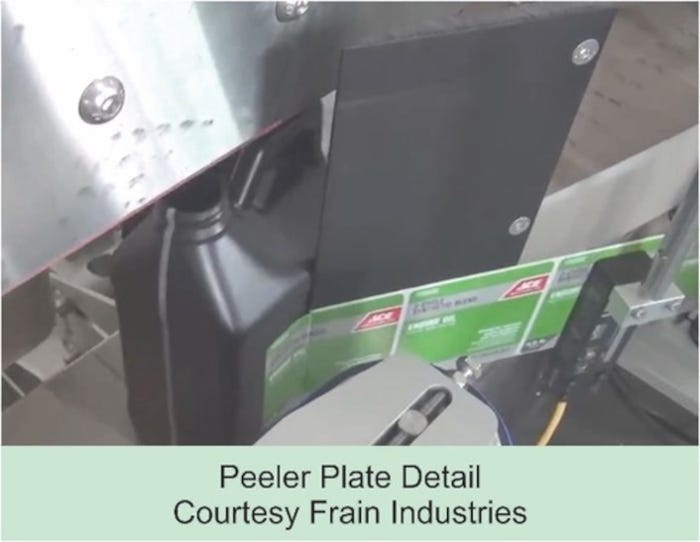How Does a Pressure-Sensitive Label Get on a Package?
The basic operation of a pressure-sensitive labeler is pretty consistent across different machinery manufacturers. Here’s how it works.
May 27, 2022

Ever wonder how pressure-sensitive labelers work? They’re pretty simple. That’s which is why they’re so widely used.
Pressure-sensitive labels bring their own adhesive or glue. A rolled up paper or plastic backing web keeps the labels from sticking until they are applied to a package. The magic is in transferring the label from the backing strip to the package.
The schematic above is typical of virtually every pressure-sensitive labeler. Details will change but the general principal is the same.
The label roll unwinds over a tension control roller. Consistent tension control is critical to consistent label application on the product.
A series of guide rollers carry the web through the labeler to the peeler plate. The peeler plate, sometimes called a knife edge, reverses the web direction. As it does, the web goes back while the label separates from the web and continues forward, either directly onto the product or onto an applicator.

The nip-and-pressure roll pulls the web through the labeler. The empty web is collected on the rewind reel.
The process is started when a sensor detects the product. This starts the nip roller pulling the web, dispensing the label. The label sensor detects the gap between labels and stops the nip roller when the label is fully dispensed. Timers and other controls make sure that the label dispenses within +/-1/32 inch. Various product handling systems allow them to label virtually anything at speeds of 600 packages per minute or more.
See how simple it is? It’s not magic; it just looks that way.
Delve deeper into pressure-sensitive and other labelers in my Packaging Machinery Handbook, available on Amazon. Chapter 6 covers it all. Still have questions? Send me an email at [email protected].
About the Author(s)
You May Also Like


